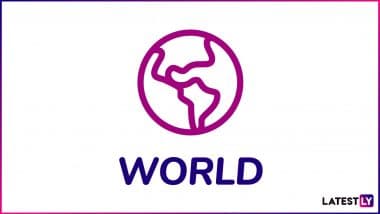New York, Aug 2 (AP) What sort of staying power does it take for a protest movement to be judged a success?
This year, without a centralised team of senior leaders, perhaps the largest protest movement in US history has been unfolding nationwide since the May 25 death of George Floyd at the hands of Minneapolis police.
By some calculations, more than 15 million Americans have taken part — decrying racial injustice, reinforcing the message of Black Lives Matter.
There's no way to know now what the movement's legacy will be — whether it will wither or compel major breakthroughs in curbing racism and inequality.
Also Read | Nepal's DTH Operator DishHome Restarts Airing All Indian News Channels.
But at this moment, other major protest movements of the past — both in the US and elsewhere — can offer clues about what endures or what, at least, leaves a tangible legacy.
By some measures, it took the women's suffrage movement in the United States more than 70 years before it won voting rights for American women. In the late 1980s, HIV/AIDS activists motivated by anger and fear made huge advances in just a few years thanks to a confrontational protest campaign.
The US civil rights movement of the 1950s and 1960s achieved monumental changes over a 15-year period, including landmark federal laws. Yet racism and discrimination remain pervasive problems today.
The civil rights movement had some fundamental assets that helped sustain it, according to James Ralph, a Middlebury College historian. It had multiple prominent leaders in addition to King, and multiple national organisations that generally agreed on key goals even as they sometimes differed on tactics. That approach produced such tangible successes as the Civil Rights Acts of 1964 and 1968, and the Voting Rights Act of 1965.
This year's protest movement has mobilised larger numbers of people and is more diverse. But it's too early to gauge what tangible results it will achieve.
Protest movements have been at the core of US history since before independence, and the American Revolution itself commenced after a more than decade of protests against British-imposed taxes. Over the ensuing decades, there was scarcely a lull.
The Revolutionary War had barely ended when, in 1791, the Whiskey Rebellion flared — a multistate protest against a liquor tax imposed by the new federal government. Anti-slavery protests hastened the outbreak of the Civil War.
The Seneca Falls convention in 1848 is widely viewed as the launch of the women's suffrage movement, yet women didn't gain the right to vote until ratification of the 19th Amendment in 1920.
Compared to that long struggle, the protests of HIV/AIDS activists achieved tangible goals within a few years of organising in the 1980s. Activists staged “die-in” demonstrations, provoked mass arrests, and in 1988 converged by the hundreds outside the Food and Drug Administration's headquarters for day-long acts of civil disobedience.
In response, the FDA agreed to speed testing and approval of new therapies — a key step in curbing the high death toll from AIDS. Activist Larry Kramer, who died in May, said the protesters' sense of rage made a difference.
The largest single-day protest in US history — the Women's March — came on January 21, 2017, the day after Donald Trump's inauguration.
An estimated half million people marched in Washington, supporting women's rights and assailing Trump's misogynistic remarks. Millions more marched in several hundred other US cities and scores of foreign countries.
Assessing the march's impact is difficult. With Trump in office and Republicans controlling the Senate, there's been no breakthrough legislation on reproductive rights, immigration or other issues. Yet the mobilisation lent strength to the MeToo movement, which began nine months later and caused hundreds of prominent men facing sexual misconduct allegations to lose jobs and reputations.
Some protest movements are short-lived but leave enduring legacies. Consider the Occupy Wall Street movement that emerged in New York City in 2011. It was criticized for lacking racial diversity and a specific agenda yet helped change the discourse about economic inequality with its “We are the 99%” slogan and denunciations of the wealthy 1%.
In 2006, millions turned out to protest legislation in Congress seeking to classify undocumented immigrants as felons, and penalizing anyone who assisted them. The bill passed the US House but died in the Senate.
Congress also failed to pass tough new gun-control measures in the aftermath of the massive March for Our Lives protests organised in 2018 by students from the Parkland, Florida, high school, where a gunman killed 17 people. Nonetheless, gun-control activists have taken credit for numerous election victories, notably helping Democrats take control of Virginia's legislature in 2019.
One advantage for US protest movements: Government security forces generally permit them to mobilise. The recent deployment of federal tactical teams in Portland, Oregon, outraged protesters and Oregon officials but has been the exception, not the norm.
Texas A&M's Robinson emphasizes that protest movements produced many of the freedoms and protections Americans treasure — including several Depression-era initiatives undertaken during President Franklin D Roosevelt's New Deal.
Yet, she says, those reforms didn't fully benefit women or people of colour, setting the stage for the new wave of dissent from the 1950s through the 1970s. (AP)
(The above story is verified and authored by Press Trust of India (PTI) staff. PTI, India’s premier news agency, employs more than 400 journalists and 500 stringers to cover almost every district and small town in India.. The views appearing in the above post do not reflect the opinions of LatestLY)













 Quickly
Quickly


